The biggest struggle for organic gardeners is that we are just as prone to insects and diseases as conventional growers. Maybe more so considering the ecosystems that are created with living soils that have not been stripped and sterilized with repeated chemical use.
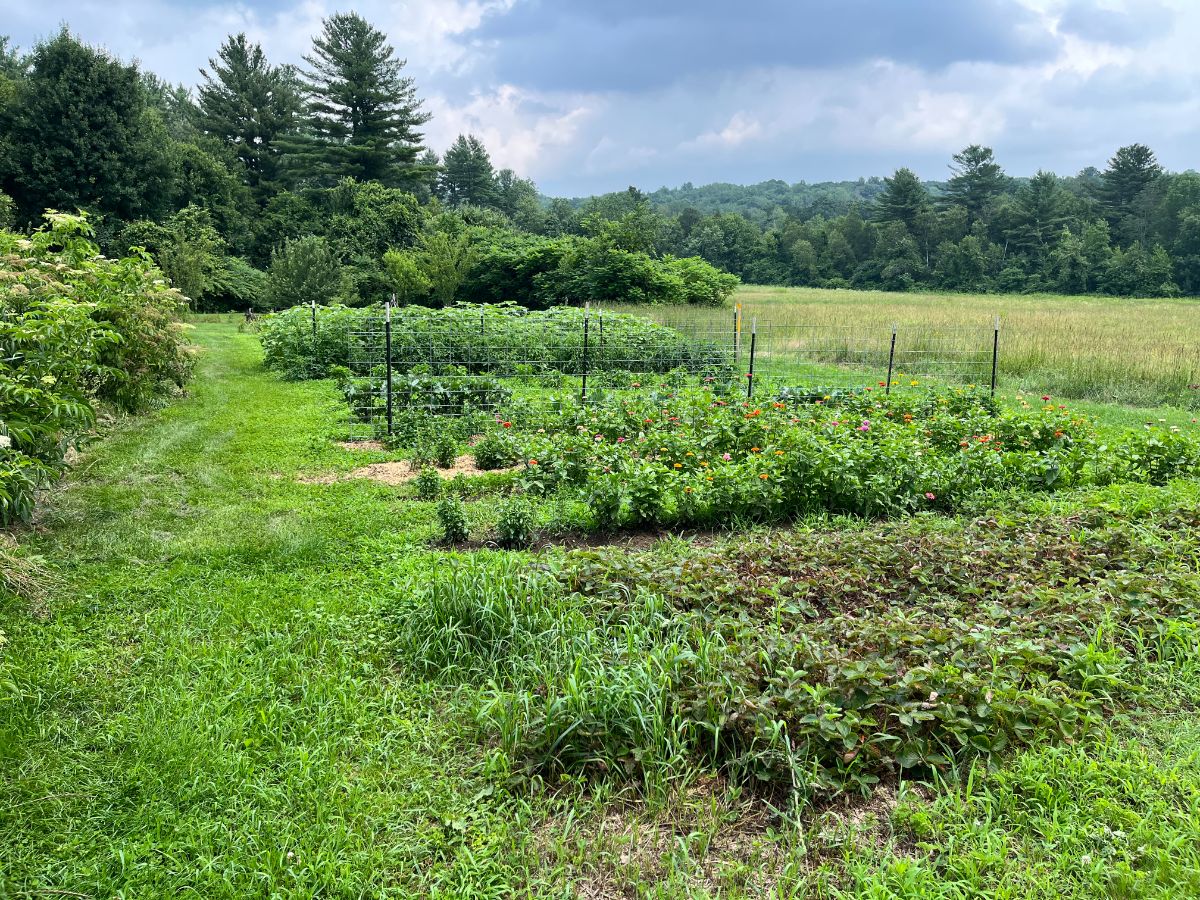
As organic gardeners, we need a good way to deal with problems when they arise. Things like over-planting, beneficial insects, and trap crops can help (a lot), but there comes a time when almost every organic gardener needs a bit of help. Read: products to treat insects and diseases.
There are several good products that organic growers can use to fight the most common insects and garden diseases. Some are multi-purpose, while others are quite targeted in their use. Building a sort of organic gardening “first aid” kit of these products will set you up to successfully combat the pests and diseases that will inevitably plague your garden.
Jump to:
- Be Prepared; Don’t Get Caught Without
- Top Products for Organic Gardeners to Keep on Hand
- Neem Oil
- Bacillus Thuringiensis (Bt)
- Copper Fungicide
- Diatomaceous Earth (DE)
- Spinosad
- Large Garden Sprayer
- Small Spray Bottle
- What About Soap?
- Baking Soda
- Other Handy First Aid Products to Consider
- Understand the Safe Use and Application of Organic Products
Be Prepared; Don’t Get Caught Without
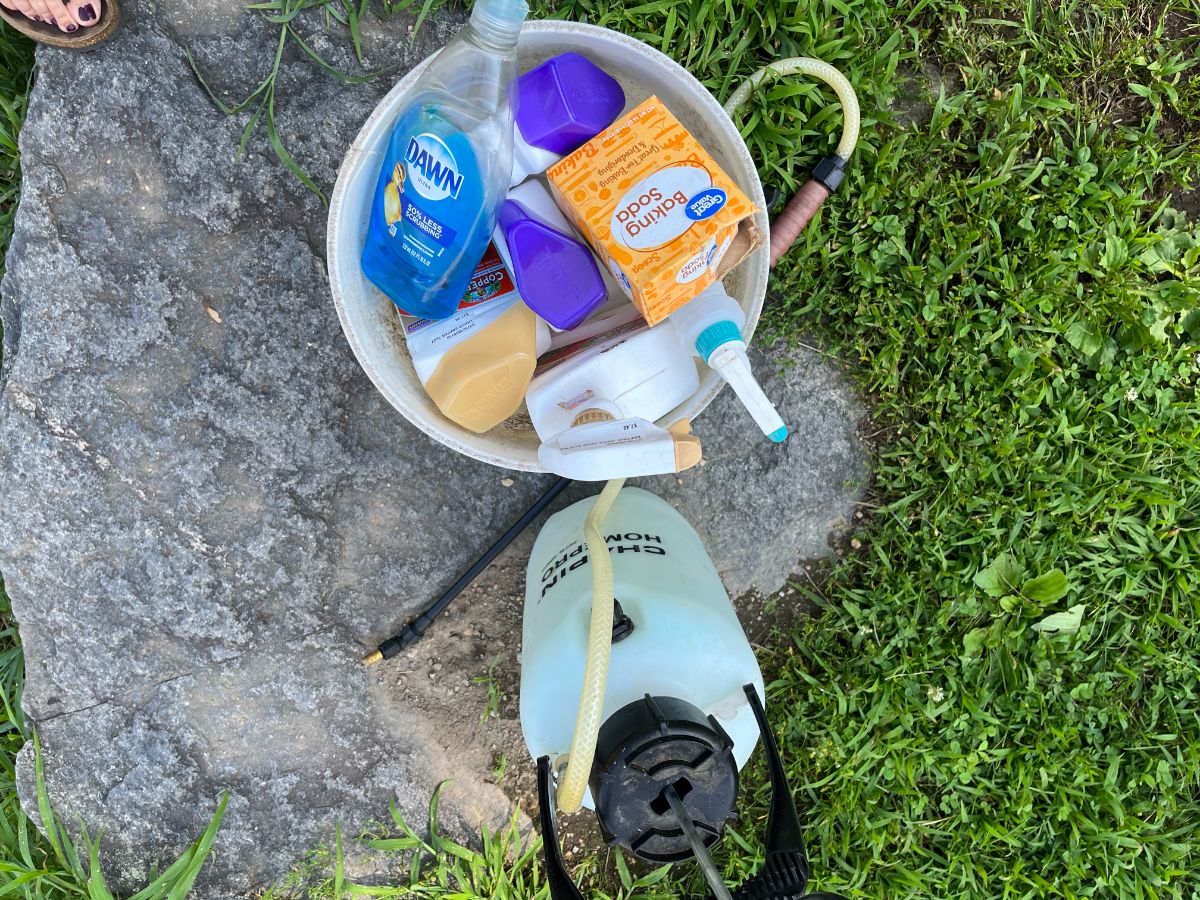
We recommend investing in the equipment and products that we’ve listed here before you need them, such as when you start your garden or at the beginning of the new garden season.
When insect populations explode, they do so everywhere, usually at the same time. When diseases like blight and leaf spot hit an area, they hit it hard. Local suppliers will often sell out quickly, and by the time you can have a product ordered and shipped to you, the damage may be well on its way to being out of control.
You will do well to build your kit ahead of time. Ordering online will ensure that you have the widest variety and choice of sellers and prices to choose from. Even if your season has started, though, don’t wait to collect these items. In fact, with the gardening season well under way, it’s even more important to shore up your supply and build your first aid kit since the demand for these products will already be well under way.
Top Products for Organic Gardeners to Keep on Hand
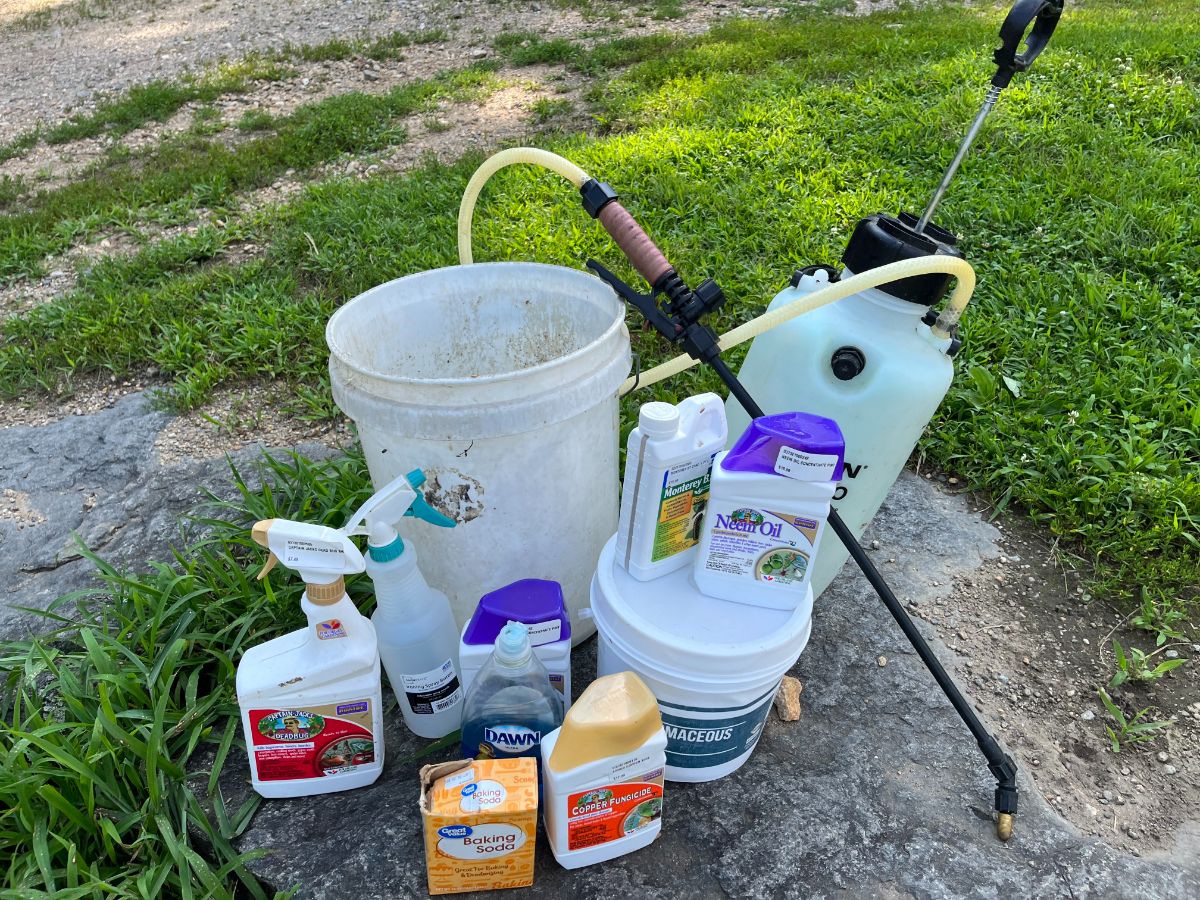
This list focuses primarily on organic products and solutions for the garden but lists a few necessary tools and items to have on hand, too.
The equipment list is minimal for the most part. It is also reusable for years to come, so look at it as more of an investment in your gardening future rather than an expense driving up the cost of this year’s vegetables. Think of this equipment in the way you would think of a trowel or a garden hoe.
Here are the products and supplies you should have on hand:
Neem Oil
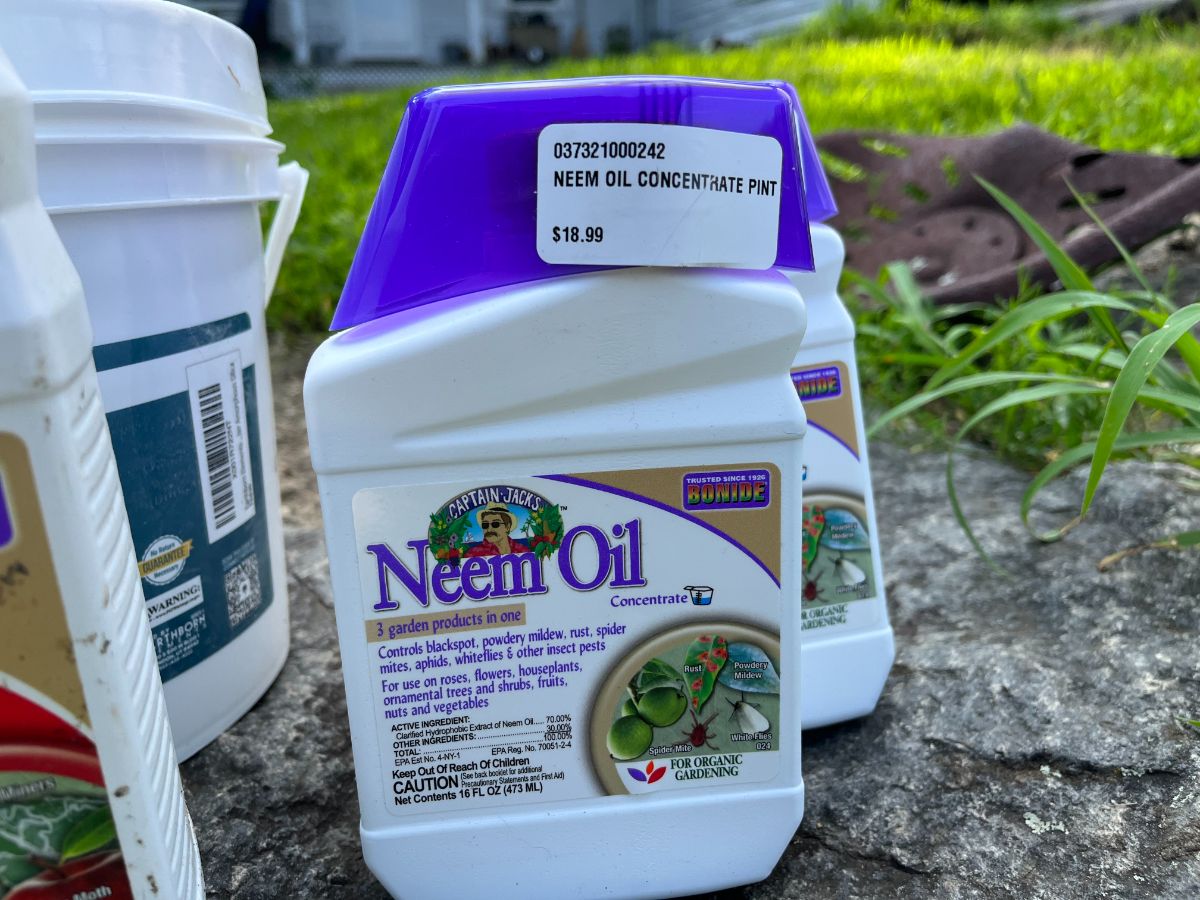
Neem oil is a naturally derived oil that is pressed from the seeds of the Neem tree (an evergreen tree native to India). It is a good multi-purpose product for the home gardener. It is an effective fungicide that can control fungal diseases like rust, blight, and powdery mildew, among other diseases caused by fungi.
Neem oil is also a natural insecticide that, when used according to its directions and when care is taken to avoid active pollinators and beneficial insects, has a low likelihood of harming beneficial insects. It controls soft-bodied insects that chew plants the best, though it has a good level of effectiveness against beetles (like Japanese beetles) and other insects.
One of the greatest advantages of neem oil is that it is multi-purpose. It is effective against some of the most common fungal garden diseases and against many insects (over 200). This means that with only one product, you can control both problems.
Often, plant diseases and insect infestations go hand in hand because insects are vectors for the spread of disease. A multi-purpose product like Neem is cheaper to use, faster, and less work for you, and can reduce the risk to beneficial insects because you are applying one product instead of two.
Bacillus Thuringiensis (Bt)
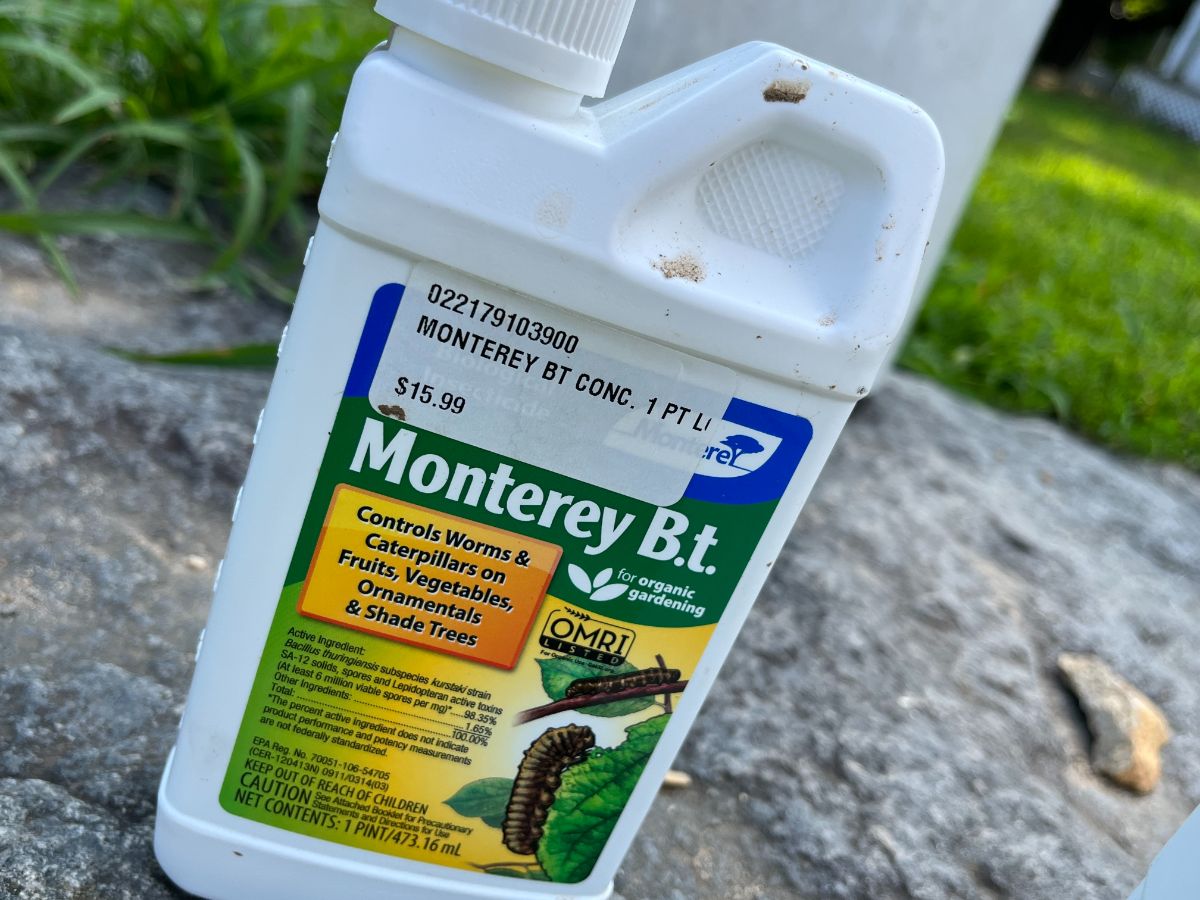
Bacillus Thuringiensis (Bt) is also a naturally occurring product. It is a bacterium that lives naturally in soil. It is very safe for humans and mammals and even safe for things like bees because it is only toxic to certain pests.
There are different strains of Bt that target different garden pests, but for the most part, think of Bt as an effective insecticide to use against plant-eating worms and caterpillar-like pests.
Bt does not kill adult beetles, flies, or moths (many of which are a problem because they lay eggs that turn into larvae that chew and kill garden plants), but it will kill the larvae of many of these insects, and so it is effective in controlling populations and in protecting your plants.
One thing to know about Bacillus thuringiensis is that some strains can kill the larva of butterflies and moths that you might value and want to protect. Also, there are several strains of Bt, and not all strains target the same worms and caterpillars.
To use Bt effectively and in as harmless a way as possible, it is important to properly identify the worms or caterpillars that you are targeting, and only spray target plants. Take care not to overspray non-target plants, and do not spray Bt on plants that you know have butterfly caterpillars that should be protected.
Overall, Bt is considered very safe to use in the organic garden. It is a specific, targeted product that is very good at not causing collateral damage to pollinators and beneficial insects when it is used for its intended purpose and when care is taken to protect vulnerable beneficial species.
Copper Fungicide
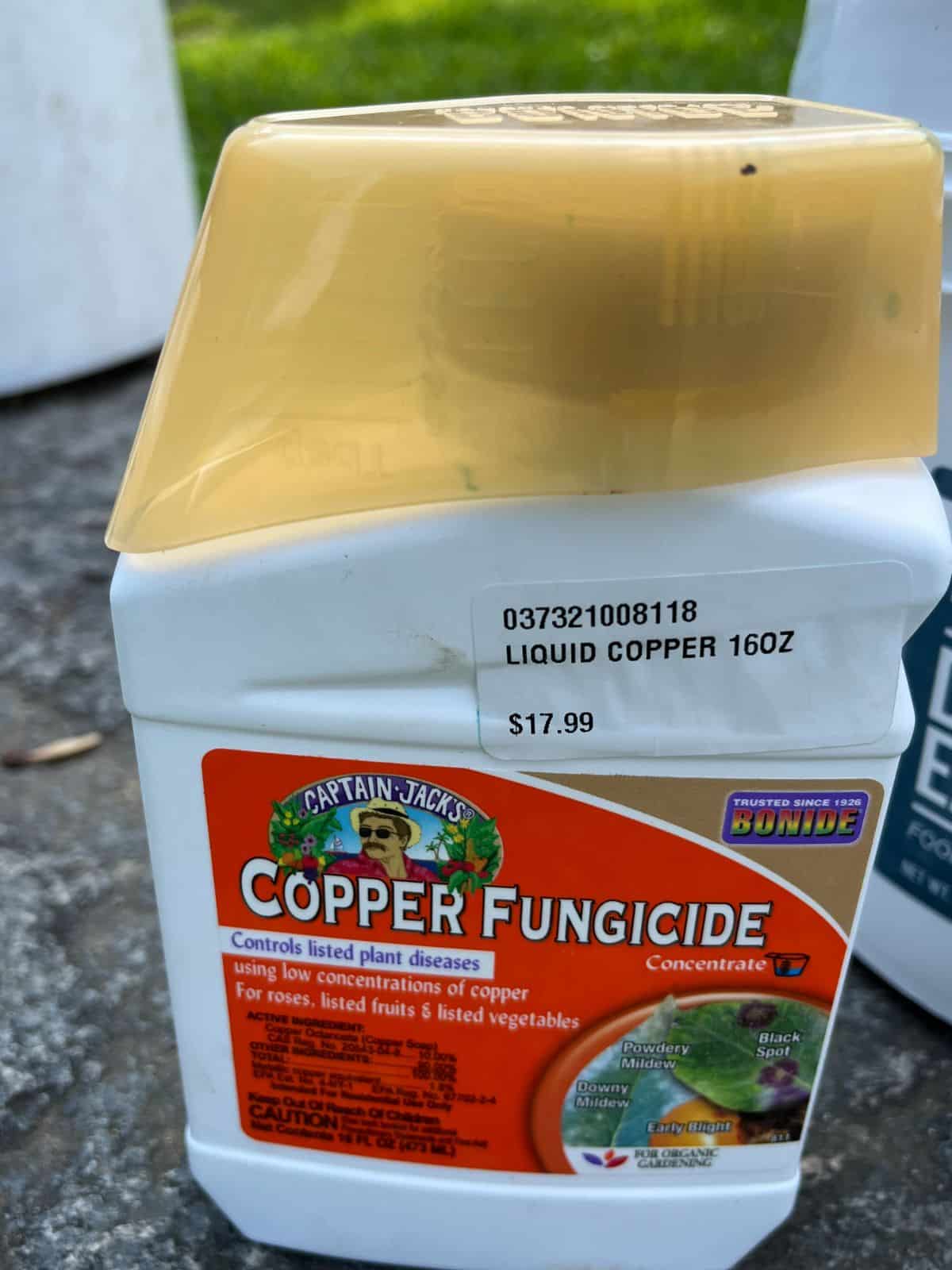
Copper preparations are good for controlling fungal diseases and mildews like powdery mildew. They have some effectiveness against certain bacterial diseases, too.
Copper fungicides use copper metal to kill mostly on contact with disease-causing fungal spores. They do this by interrupting the spores’ proteins and enzymes. Its action is not as good after a plant is infected, which is why it is important to be vigilant and treat your garden either as a method of prevention or at the earliest signs of fungal disease. If fungi are controlled and kept to low levels, there are not enough to cause killing damage and total crop loss—this is why prevention and early control are important.
Some of the diseases copper fungicide can control include leaf spot, mildew, early blight, late blight, black spot, leaf curl, and many others. Copper fungicide can be used on both dormant and actively growing plants, trees, and bushes, and it can be applied to plants up to the day of harvest.
Copper fungicide has a high level of safety for pollinators and insects, but it can cause problems for earthworms if it is allowed to build up in the soil. However, a moderate, judicious level of use will allow you to control plant diseases without causing major harm.
Diatomaceous Earth (DE)
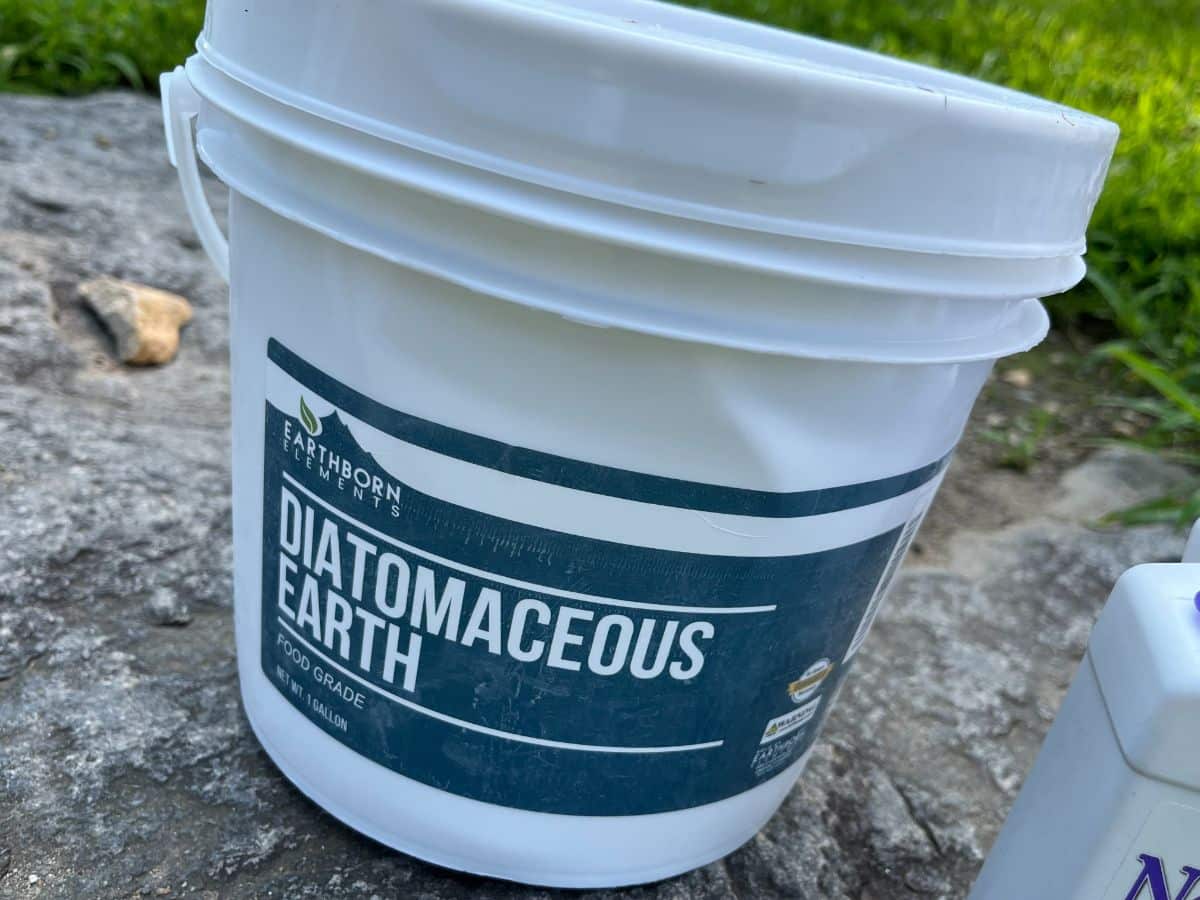
Diatomaceous earth is a natural product that is collected from the earth. It is the tiny, fossilized skeletons of aquatic organisms that once lived in bodies of water. Diatomaceous earth (DE) is quite safe, and in fact, many, if not most, of the DE sold for home use is labeled as food-grade, safe to use on edible vegetables and fruit plants, and safe to use even on animals and in animal foods (with research into proper safe use).
Diatomaceous earth is silica, a natural substance many of us are familiar with. It is one of the most common minerals on Earth. To small insects and organisms, DE is very sharp. It causes cuts in the body and exoskeletons, which lead to dehydration and death.
One of the issues with diatomaceous earth is that it is somewhat indiscriminate. It is considered a target for any animal with an exoskeleton, so hard-bodied insects that crawl across it will die. This means that bees, ladybugs, butterflies, lacewings, and others can be affected by diatomaceous earth. To protect bees and pollinators, it is best not to use DE when pollinators are present and active on your vegetable or fruit plants.
In general, this translates to: do not apply Diatomaceous earth when plants are in bloom. Flowers are what bees and pollinators visit plants for, and they are not typically visiting plants when they are not flowering (however, be aware that butterflies and some others may go to plants to lay eggs, so it’s smart to know which plants they are drawn to for that purpose).
DE may also be applied on the ground as a barrier around plants or around frames or foundations to control ants, ticks, fleas, and other hard-bodied insects crawling over the soil. It is not considered very effective against things like slugs. Though it may slow slugs down or deter them to an extent, a simple beer trap is considered a more effective organic DIY slug treatment.
Risks to humans are low when using DE, though it can be harmful if regularly inhaled in large quantities, and so it is smart to wear a mask or face covering when applying DE.
Diatomaceous Earth (or DE) can be one of the more difficult products to find, and it is often one of the more in demand, so it is smart to buy it early. Because it is a natural powder that is similar to sand or glass, it cannot expire, so there is no concern that it might go out of date before it is used. It also has a wide range of uses for both the home and garden, so it’s well worth keeping on hand.
Do keep your DE dry when storing. In the garden, you may need to reapply it after it rains. DE is not very effective when it is wet, so plan applications for when rain is over or not in the forecast for a few days. If stored DE gets wet, it is not ruined, but it will need to dry out. DE powders that are wet in the garden will still be effective if they are still there and have a chance to dry again after the rain. Dry DE is sharp, and that is how it kills pests.
Spinosad
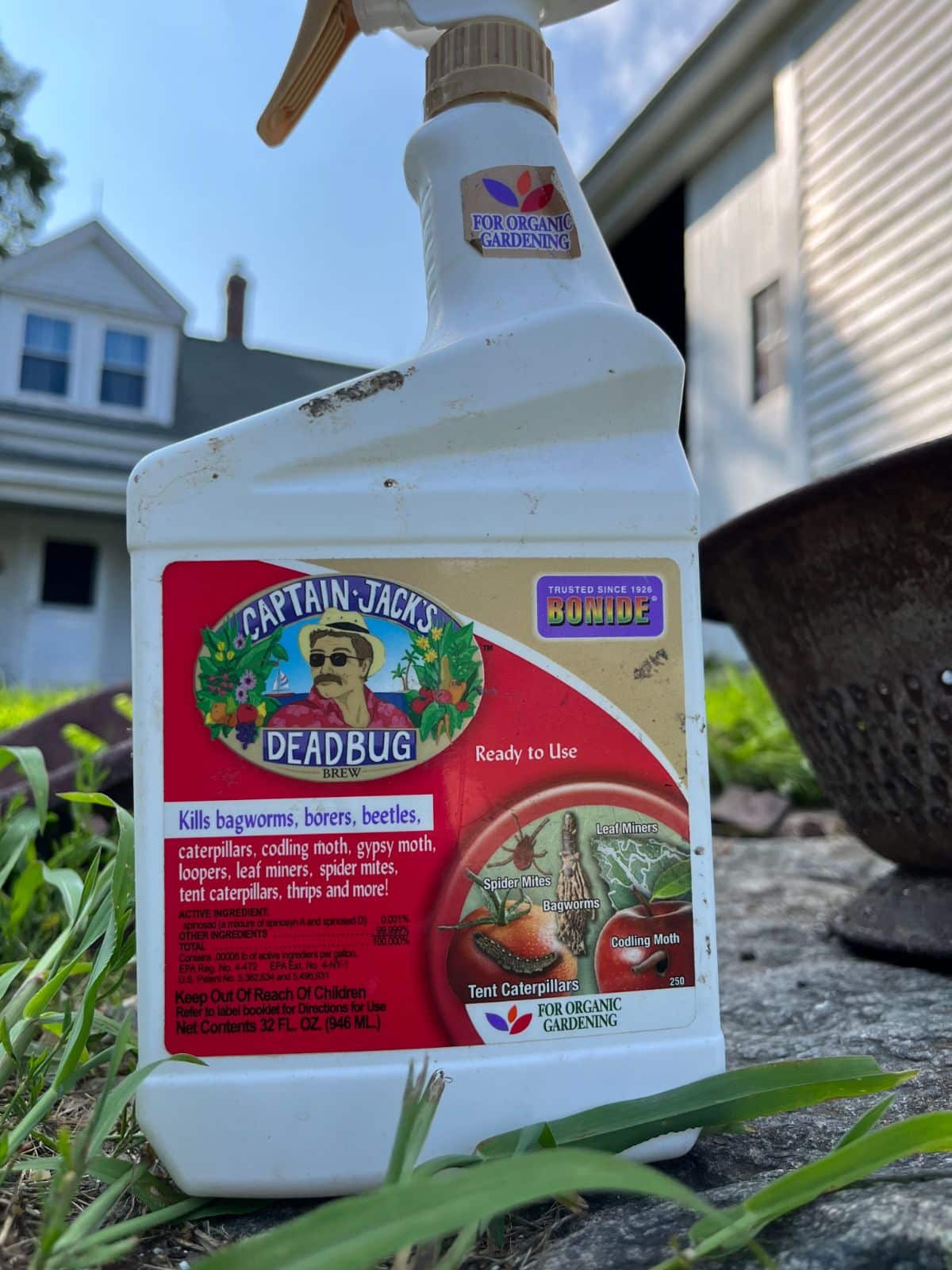
Spinosad is also a natural insecticide that is derived from soil bacteria. It acts in the nerves of target insects and in their digestive tracts, which makes it a good product to target chewing pests while leaving beneficial insects alone.
Some advantages of Spinosad include longer-lasting action in comparison to other organic insecticides like Bt (as long as a week) while offering control of a broad range of garden pests. Some of these include corn worms, army worms, bag worms, thrips, leaf miners, ants, fruit flies, hornworms, borers, beetles, including Japanese beetles and potato beetles, and others. Experts point out that Spinosad is curiously effective against several of the hardest-to-kill garden pests.
Spinosad is safe for the majority of beneficial insects, including predatory wasps, ladybugs, lacewings, thrips, and hornworms. It is considered harmful to bees when the product is wet but is safe after it dries, so choose the timing of your spraying to avoid spraying when bees are active (spray early or late in the day or on plants not in bloom).
With proper use, Spinosad can actually reduce your pesticide use because it is longer lasting and it preserves beneficial insects, which means they are still present and active and fighting against new and remaining pests.
Large Garden Sprayer
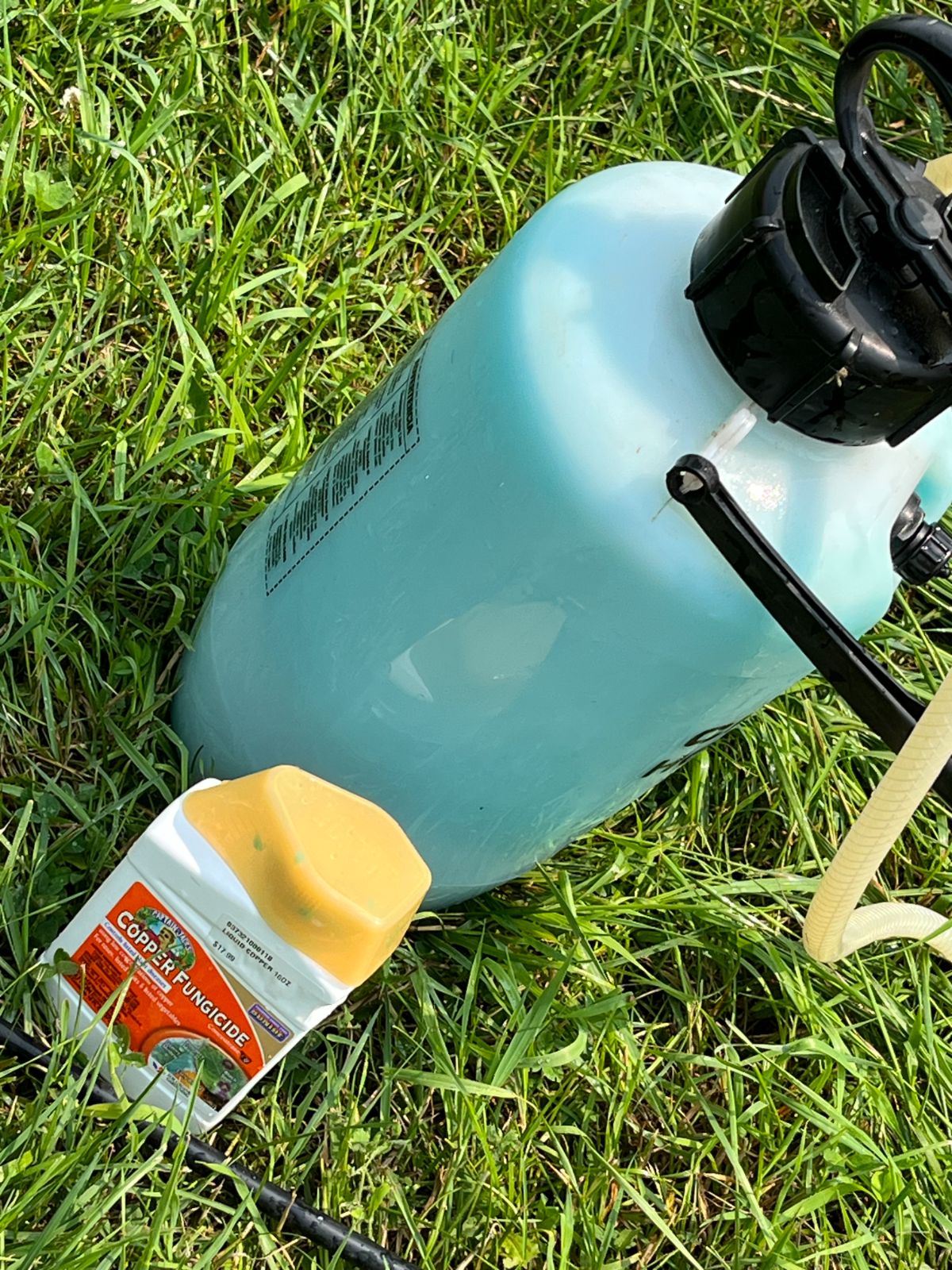
Now that you have a list of solid, reliable, effective organic products to use in your garden, you will need a way to apply them. For spraying large quantities of product on sizable plantings, you will need a large sprayer. Invest in at least a one-gallon size pump sprayer for treating large areas. A two- or three-gallon size will be even better.
If you find it difficult to continually pump up a sprayer to maintain pressure, you might want to consider a battery-operated garden sprayer.
Small Spray Bottle
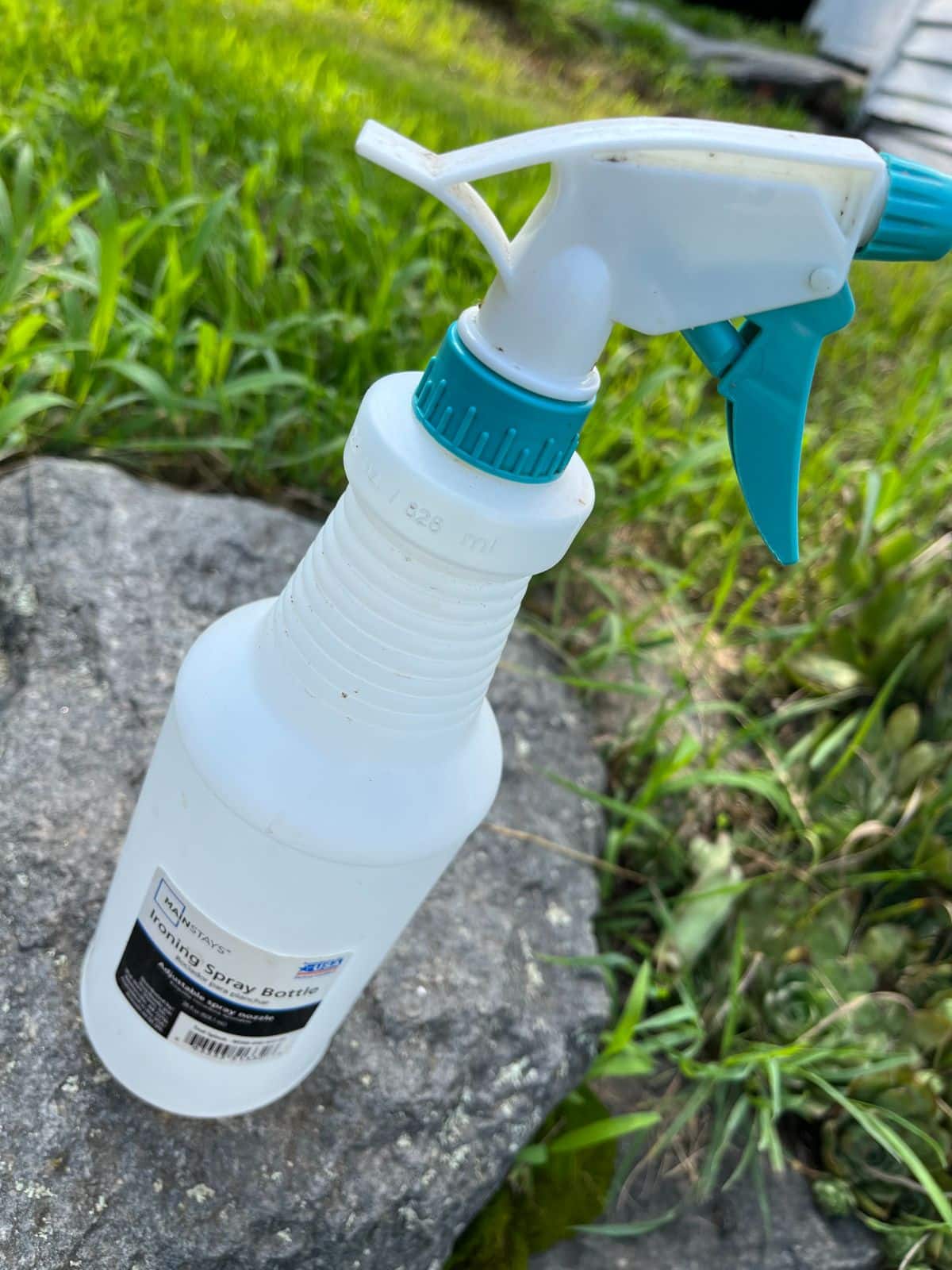
You should also buy a cheap small spray bottle or two. Keep these on hand for spot spraying for bugs and suspect spots on plants in between whole patches or whole garden spraying.
It is a good idea to keep a bottle mixed with Neem oil on hand, as well as any other product that you want to be able to grab quickly for spot treating. Of course, always label the bottle with its contents, keep it out of the reach of children, and take care not to reuse bottles for products that should not be mixed. Don’t use organic pesticides in bottles that previously held plant-killing products (like horticultural vinegar, for example).
What About Soap?
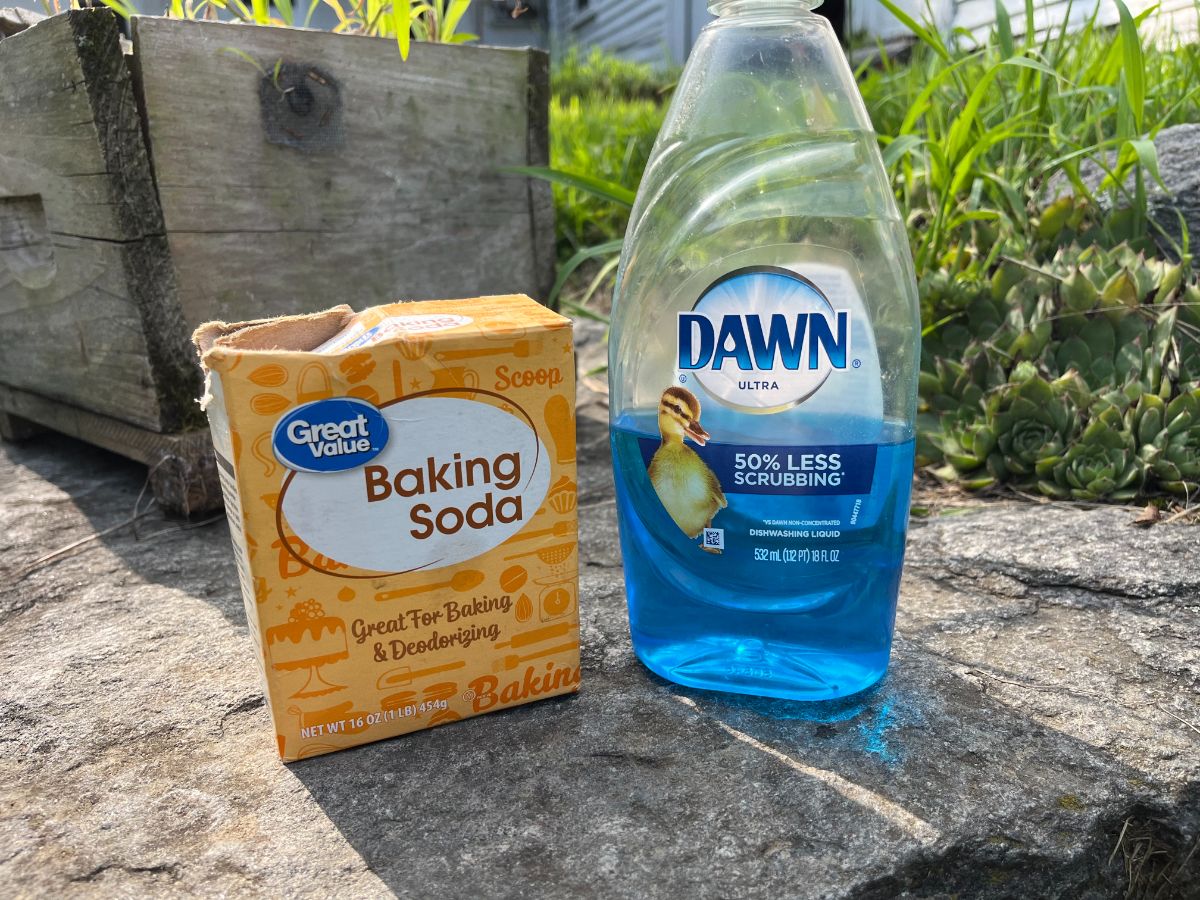
Soap and dish soap are not included on this list of organic gardening products because they are not technically considered organic. However, soap and dish soap (which is really a detergent, for those who know the difference between the two) are harmless to people and have good garden uses.
Soaps can be used in a variety of ways in the garden. They are good killers of certain types of insects—mainly small, soft-bodied insects like aphids and mites. They are not considered too harmful to beneficial insects because most of them are larger and harder-bodied.
Soap works (it is thought) by removing the protective waxy coating on some insects and by causing dehydration and death. Beneficial insects and pollinators are not bothered by soap, for the most part, but you should still take care not to douse them in it.
Soap is also a common addition to DIY insecticidal soap sprays and in DIY weed killers and other homemade garden recipes. You’ll often see either dish soap or castile soap listed in DIY garden recipes.
Soap and dish detergents are emulsifiers that help ingredients blend and surfactants that break the surface tension. They act as carrier agents for lighter ingredients like vinegar or for oils like Neem oil that don’t like to mix uniformly with water. This helps them to stay blended and suspended in water mixtures and to adhere to plant surfaces long enough to do their job.
Soap can’t technically be called organic because organic products are not supposed to undergo chemical processing, and making soap is technically a chemical process. It’s mostly hair-splitting that goes back to the definition of organic. While soap is not technically organic, there are soaps that are made with organic ingredients, and soap is a relatively harmless product that is useful for low-impact home gardening. It probably deserves a place in your home garden first aid kit, too.
(*If DIY is not your thing, you can also buy preparations of insecticidal soap that are ready to use.)
Baking Soda
Baking soda (also called bicarb, sodium bicarbonate, and bicarb of soda) is another common household ingredient that, as a food, is something relatively safe and acceptable for organic gardeners to use, though you may or may not find it listed as technically “organic”.
There are many ways to use baking soda in the garden. It is very cheap and can be found anywhere, at any time. It is a good product to use to fight fungal diseases (it works primarily by changing the pH on the plant surface and creating an environment in which fungi cannot grow). It has been used as a safe fungicide since the 1930s.
Other Handy First Aid Products to Consider
This is a very good, comprehensive list of products that you should keep on hand for dealing with the most common problems that arise in organic gardens. The list could go on, but here are a couple of other things you might want to consider:
- A small “dust buster” type vacuum or insect vacuum – these are good for gently vacuuming up hard-to-kill pests or insects when you don’t want to use any sprays or products in your garden. They are good at protecting pollinators and beneficial insects since you control what gets sucked up.
- Wide masking tape or painter’s tape – a roll of wide paper tape is a handy thing to have. You can use it to spot-treat insects and remove their eggs from plant leaves. Not all products can break through to kill insect eggs, but you can use the tape to remove them, then roll it up and throw them away. You can also use tape roll backward on your hand to remove ticks from your clothing or body.
- A cleaning caddy or five-gallon bucket that can be used to keep your first aid kit together and all in one place—easy to grab-and-go to the garden.
Understand the Safe Use and Application of Organic Products
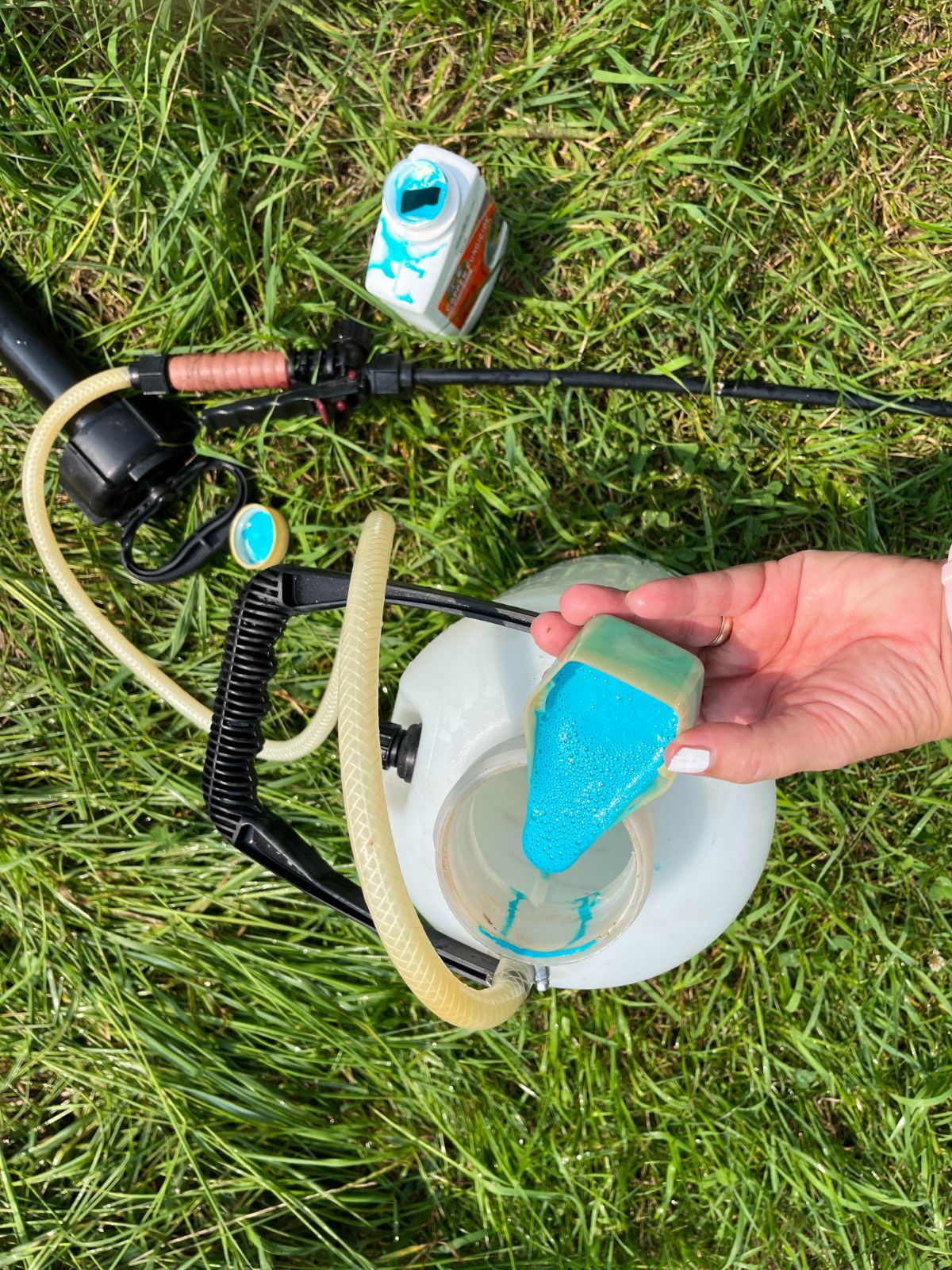
Though we’ve chosen some of the safest and simplest products for you to use in your organic garden for combatting bad bugs and common plant diseases, it must be said that there is no such thing as a 100% “safe” product.
Even organic products can cause damage to beneficial insects when they are not used appropriately or as directed. Disease-killing products can harm plants if they are not mixed according to the instructions for targeted use and, more importantly, in proper concentrations. Be aware that some plants may be more sensitive to certain products than other plants are. Check the chart on the label to see if your vegetable or fruit is, in fact, listed for use with that product.
It is not difficult to use organic products safely, but it is something to be aware of and practice safe use of organic garden insecticides, fungicides, and disease treatments.
These products will usually need to be reapplied every 7 to 14 days (about every one to two weeks) to keep insects and diseases in check. Organic products are not expected to act for a much longer-term because they are chosen, in part, for their ability to have a low impact on the environment and not to leave a lasting trace.
Residual activity differs between products and depending on environmental conditions. It is common for organic products to have to be reapplied after heavy rains because they usually wash away.
For the health of your plants and the beneficial insects that call your garden home, be aware of recommendations for reapplication. Follow these recommendations to keep insects and diseases in check. Don’t apply products more often than the recommended schedule unless the product specifically says to reapply after heavy rains.
Following product instructions and the recommended application schedule will give you the best results and the highest level of success while also protecting those creatures that are most deserving of our protection.

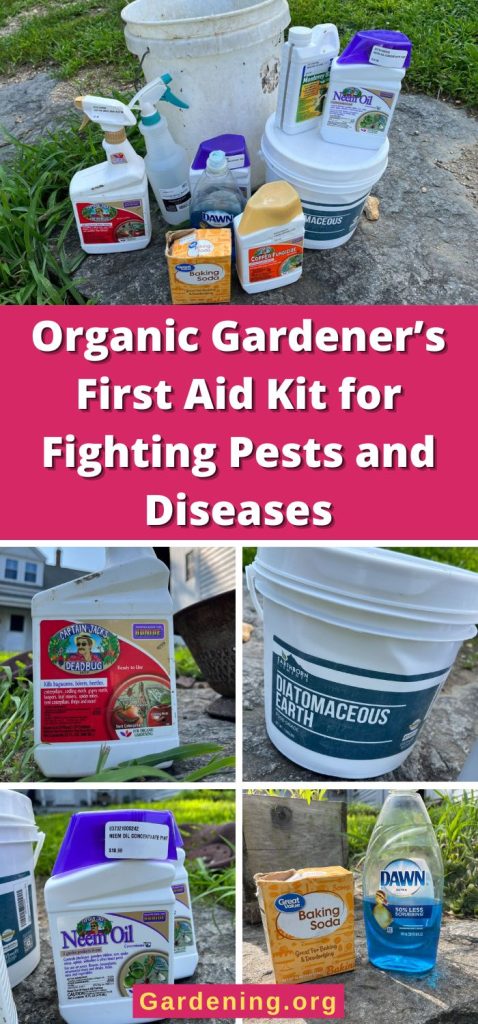
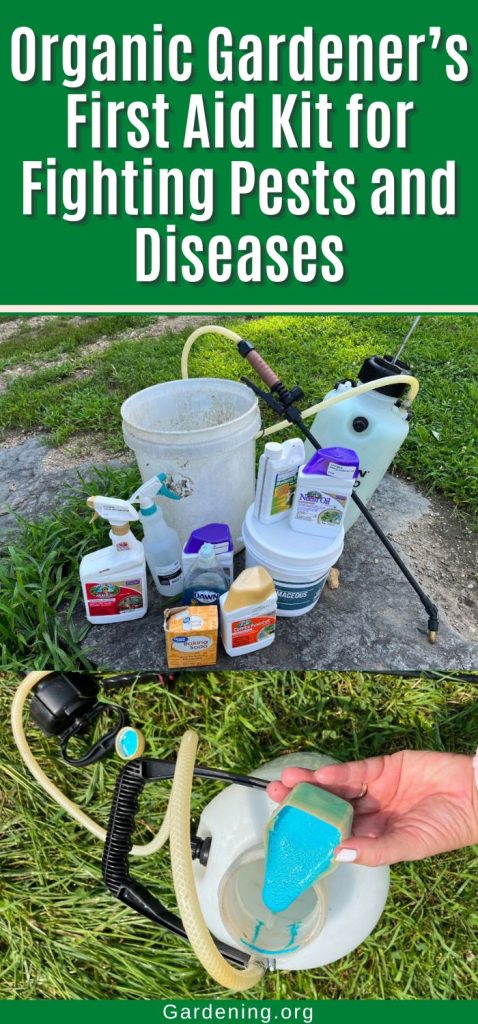
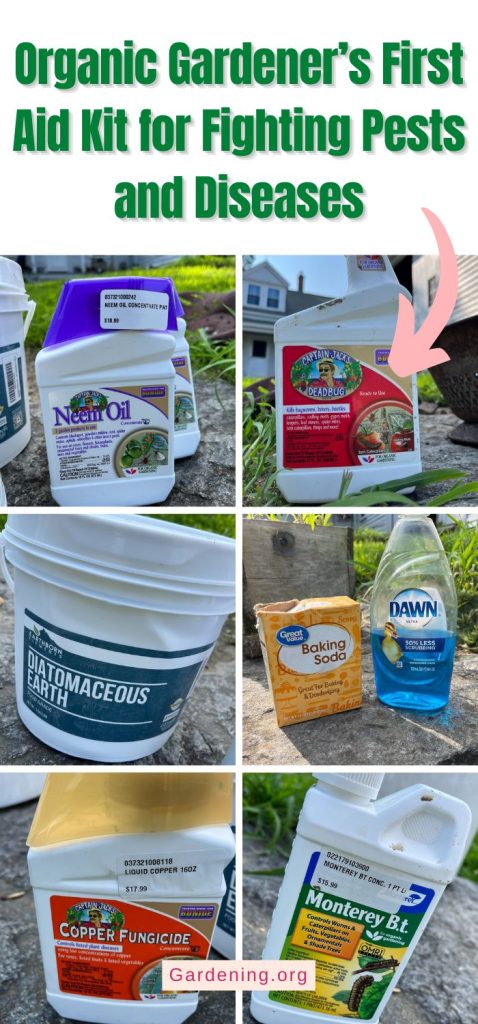

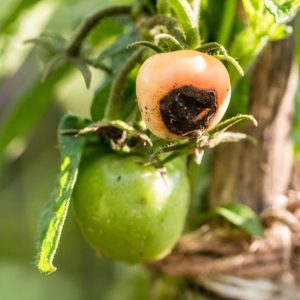
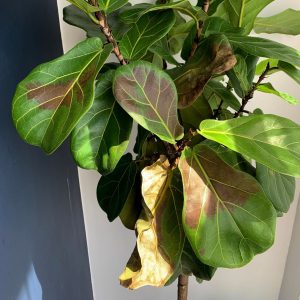
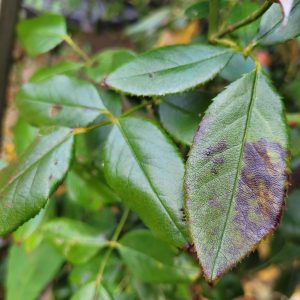
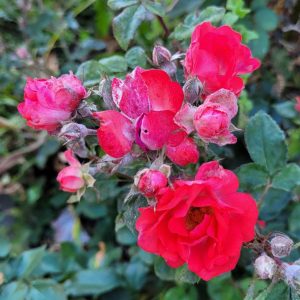
Carmen Perry
love these tips
Mary Ward
Great! Glad to hear it!